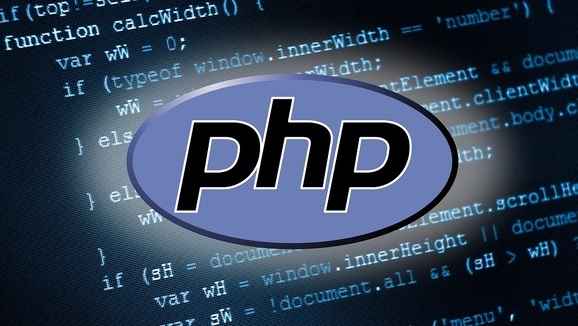When running PHP on a virtual host, you need to pay attention to the following key points: 1. Upload PHP files to the correct directory, such as public_html or htdocs, and ensure that the file permissions are 644; 2. Check and select the appropriate PHP version to avoid version incompatibility issues; 3. If you use the database, you need to create a database and user in the control panel and modify the program configuration file to fill in the database information; 4. Pay attention to common problems, such as file path errors, disabled PHP functions, permission issues, and pseudo-static settings, etc., and enable error prompts if necessary to troubleshoot problems. As long as these steps are configured correctly, the PHP program will run smoothly.

It is actually not difficult to run PHP on a virtual host, but you have to pay attention to a few key points. Most virtual hosts support PHP, but how to operate depends on the host provider and control panel you use. Here are some common practices and precautions to help you successfully run the PHP program.

Upload PHP files to the correct directory
Generally speaking, the virtual host will have a website root directory, such as public_html or htdocs . You need to upload the PHP file you wrote to this directory, or its subdirectory.

- Use FTP or SFTP to log in to the host and upload the
.phpfile - Ensure reasonable file permissions (usually recommended 644)
- If you have a control panel (such as cPanel, Plesk), you can upload it directly through the file manager
If you upload an index.php to the root directory, it will be automatically loaded when accessing your domain name.
Check if the PHP version is suitable
Different virtual hosts may have different PHP versions pre-installed, and some also allow you to switch versions by yourself. If your program has requirements for PHP version, this step cannot be skipped.

- Log in to the control panel and find "PHP Settings" or similar options
- View the currently running PHP version
- If needed, you can choose a higher or lower version (such as from 7.4 to 8.1)
Some old projects rely on old version functions, and new versions may be incompatible; new projects may require higher version features, so be sure to confirm them clearly.
Configure the database (if MySQL/PostgreSQL is used)
Many PHP programs require database use, such as WordPress and Discuz. At this time, you have to create databases and users in the virtual host first.
- Create a database in Control Panel
- Create a database user and grant permissions to the user
- Modify the program's configuration file (such as
config.php) and fill in the database name, user name and password
For example: When you install WordPress, you will be prompted to fill in the database information, and these must be prepared in advance in the control panel.
Notes and FAQs
Sometimes things that seem simple can go wrong. Here are some small details that are easy to ignore:
- The file path is written incorrectly, resulting in 404 or blank page
- PHP functions are disabled (for example, some hosts will close
exec()for security purposes) - The permission setting is incorrect, and the "Permission denied" error appears
- Pseudostatic is not enabled (affecting URL rewriting function)
When you encounter problems, you can view the server log or try to open the PHP error message (adding an ini_set('display_errors', 1); error_reporting(E_ALL); in the development environment can help troubleshoot problems).
Basically that's it. As long as the files are placed in the right location and the environment is configured, most PHP programs can run normally on the virtual host.
The above is the detailed content of How to run PHP on a virtual host?. For more information, please follow other related articles on the PHP Chinese website!

Hot AI Tools

Undress AI Tool
Undress images for free

Undresser.AI Undress
AI-powered app for creating realistic nude photos

AI Clothes Remover
Online AI tool for removing clothes from photos.

Clothoff.io
AI clothes remover

Video Face Swap
Swap faces in any video effortlessly with our completely free AI face swap tool!

Hot Article

Hot Tools

Notepad++7.3.1
Easy-to-use and free code editor

SublimeText3 Chinese version
Chinese version, very easy to use

Zend Studio 13.0.1
Powerful PHP integrated development environment

Dreamweaver CS6
Visual web development tools

SublimeText3 Mac version
God-level code editing software (SublimeText3)

Hot Topics
 How do I implement authentication and authorization in PHP?
Jun 20, 2025 am 01:03 AM
How do I implement authentication and authorization in PHP?
Jun 20, 2025 am 01:03 AM
TosecurelyhandleauthenticationandauthorizationinPHP,followthesesteps:1.Alwayshashpasswordswithpassword_hash()andverifyusingpassword_verify(),usepreparedstatementstopreventSQLinjection,andstoreuserdatain$_SESSIONafterlogin.2.Implementrole-basedaccessc
 How can you handle file uploads securely in PHP?
Jun 19, 2025 am 01:05 AM
How can you handle file uploads securely in PHP?
Jun 19, 2025 am 01:05 AM
To safely handle file uploads in PHP, the core is to verify file types, rename files, and restrict permissions. 1. Use finfo_file() to check the real MIME type, and only specific types such as image/jpeg are allowed; 2. Use uniqid() to generate random file names and store them in non-Web root directory; 3. Limit file size through php.ini and HTML forms, and set directory permissions to 0755; 4. Use ClamAV to scan malware to enhance security. These steps effectively prevent security vulnerabilities and ensure that the file upload process is safe and reliable.
 What are the differences between == (loose comparison) and === (strict comparison) in PHP?
Jun 19, 2025 am 01:07 AM
What are the differences between == (loose comparison) and === (strict comparison) in PHP?
Jun 19, 2025 am 01:07 AM
In PHP, the main difference between == and == is the strictness of type checking. ==Type conversion will be performed before comparison, for example, 5=="5" returns true, and ===Request that the value and type are the same before true will be returned, for example, 5==="5" returns false. In usage scenarios, === is more secure and should be used first, and == is only used when type conversion is required.
 How do I perform arithmetic operations in PHP ( , -, *, /, %)?
Jun 19, 2025 pm 05:13 PM
How do I perform arithmetic operations in PHP ( , -, *, /, %)?
Jun 19, 2025 pm 05:13 PM
The methods of using basic mathematical operations in PHP are as follows: 1. Addition signs support integers and floating-point numbers, and can also be used for variables. String numbers will be automatically converted but not recommended to dependencies; 2. Subtraction signs use - signs, variables are the same, and type conversion is also applicable; 3. Multiplication signs use * signs, which are suitable for numbers and similar strings; 4. Division uses / signs, which need to avoid dividing by zero, and note that the result may be floating-point numbers; 5. Taking the modulus signs can be used to judge odd and even numbers, and when processing negative numbers, the remainder signs are consistent with the dividend. The key to using these operators correctly is to ensure that the data types are clear and the boundary situation is handled well.
 How can you interact with NoSQL databases (e.g., MongoDB, Redis) from PHP?
Jun 19, 2025 am 01:07 AM
How can you interact with NoSQL databases (e.g., MongoDB, Redis) from PHP?
Jun 19, 2025 am 01:07 AM
Yes, PHP can interact with NoSQL databases like MongoDB and Redis through specific extensions or libraries. First, use the MongoDBPHP driver (installed through PECL or Composer) to create client instances and operate databases and collections, supporting insertion, query, aggregation and other operations; second, use the Predis library or phpredis extension to connect to Redis, perform key-value settings and acquisitions, and recommend phpredis for high-performance scenarios, while Predis is convenient for rapid deployment; both are suitable for production environments and are well-documented.
 How do I stay up-to-date with the latest PHP developments and best practices?
Jun 23, 2025 am 12:56 AM
How do I stay up-to-date with the latest PHP developments and best practices?
Jun 23, 2025 am 12:56 AM
TostaycurrentwithPHPdevelopmentsandbestpractices,followkeynewssourceslikePHP.netandPHPWeekly,engagewithcommunitiesonforumsandconferences,keeptoolingupdatedandgraduallyadoptnewfeatures,andreadorcontributetoopensourceprojects.First,followreliablesource
 What is PHP, and why is it used for web development?
Jun 23, 2025 am 12:55 AM
What is PHP, and why is it used for web development?
Jun 23, 2025 am 12:55 AM
PHPbecamepopularforwebdevelopmentduetoitseaseoflearning,seamlessintegrationwithHTML,widespreadhostingsupport,andalargeecosystemincludingframeworkslikeLaravelandCMSplatformslikeWordPress.Itexcelsinhandlingformsubmissions,managingusersessions,interacti
 How to set PHP time zone?
Jun 25, 2025 am 01:00 AM
How to set PHP time zone?
Jun 25, 2025 am 01:00 AM
TosettherighttimezoneinPHP,usedate_default_timezone_set()functionatthestartofyourscriptwithavalididentifiersuchas'America/New_York'.1.Usedate_default_timezone_set()beforeanydate/timefunctions.2.Alternatively,configurethephp.inifilebysettingdate.timez






